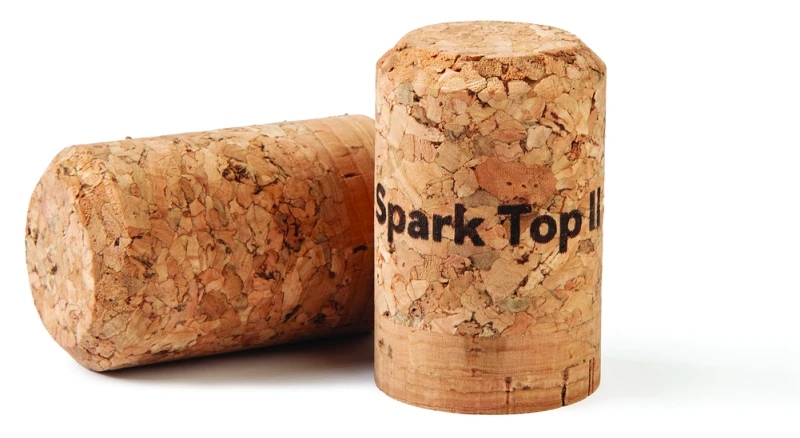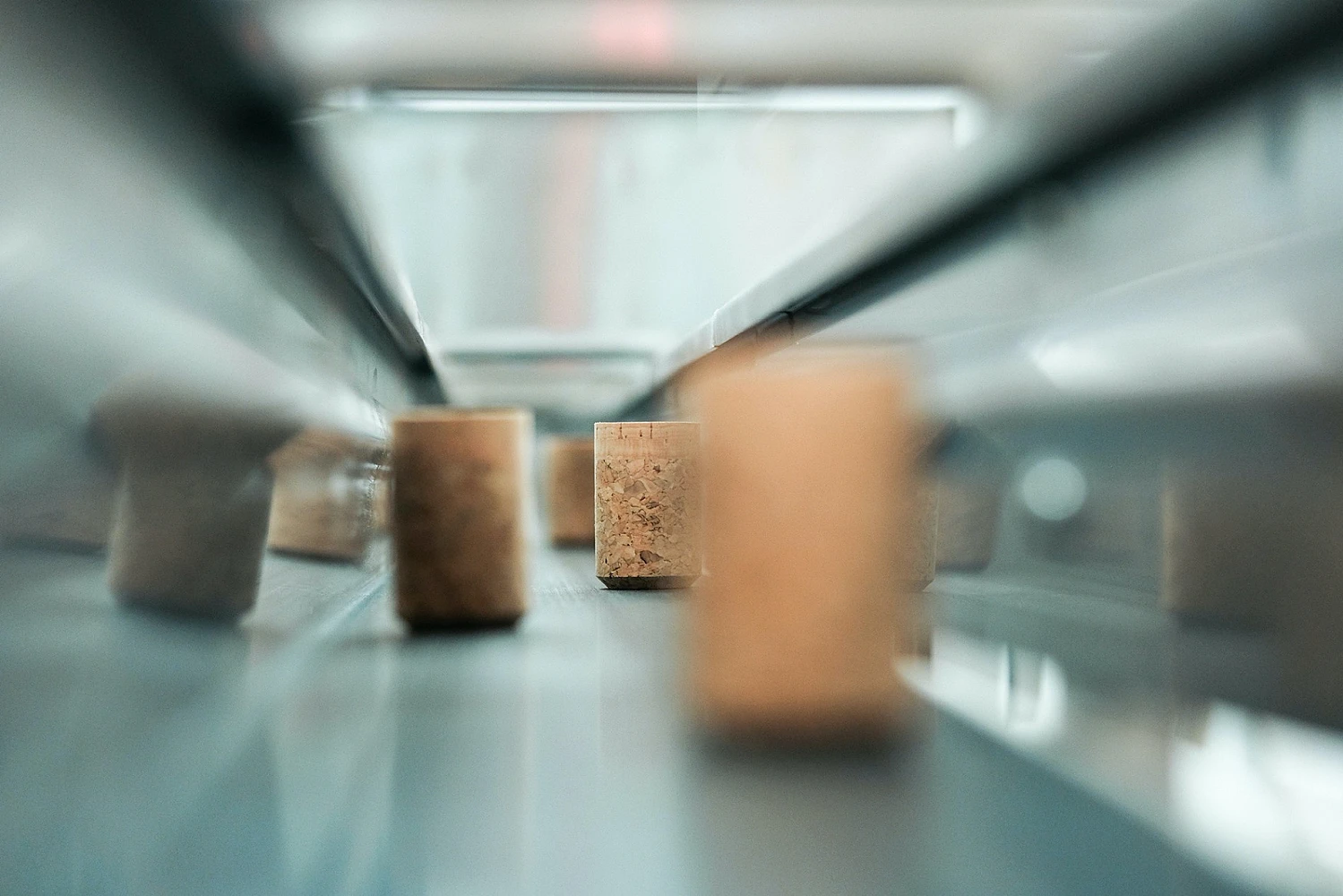- Portfolio
- Product
Portfolio
BackSpark® Top II The art of sealing sparkling wines


Excellent mechanical behavior
This technical cork stopper is made up of a granulated body, obtained by individual moulding, to which are added two natural cork discs, which act as a protective barrier in contact with the wine.
The Spark® Top II stopper undergoes two technological cleaning processes. ROSA for the cork granules and CorkNova for the discs, which ensure a stopper with excellent performance, capable of guaranteeing the evolution of sparkling wine in the bottle over decades.
Cork Properties
| Tests | Characteristics | Specifications |
|---|---|---|
| Physical-Mechanical | Length (I) | l ± 0.5 mm |
| Diameter (d) | d ± 0.3 mm | |
| Ovalisation | ≤ 0.3 mm | |
| Moisture | 4% - 9% | |
| Torsion moment | ≥ 40 daN.cm | |
| Chemical | Dust content | ≤ 1 mg/ stopper |
|
2, 4, 6 - Trichloroanisol (TCA) |
99% ≤0.5 ng/L and 1% ≤1 ng/L* |
*Releasable TCA content of 99% at or below the 0.5 ng/L quantification limit and 1% at ≤ 1.0 ng/l, conducted in accordance with ISO 20752.
- 48 x 31 mm
- 48 x 30.5 mm
- 47 x 29.5 mm
- Amorim can calculate the required cork diameter by studying the internal profile of the bottleneck, the characteristics of the wine and the corking conditions.
- Order your cork stoppers for immediate or short-term use. Ideally, these cork stoppers should be used within four months of the date of manufacture if the storage conditions are respected.
- Store the cork stoppers in their original packages, in a well-ventilated room with controlled temperature between 15°C and 25°C and 50% to 70% humidity.
- Do not leave boxes and/or bags open with surplus cork stoppers.
- Ensure any dust its removed before corking.
- Ensure the cork is compressed smoothly, to a diameter 1.5 to 2 mm smaller than the diameter of the bore of the bottle.
- Ensure insertion of the cork is as quick as possible.
- For standard bottlenecks, the cork should be inserted at 24 mm ± 2 mm from the top of the neck with the wire wood applied.
- Minimise moisture on the inside of the bottleneck.
- Don’t leave the cork stoppers in the feeder as to avoid dust.
- Always use stoppers with a surface treatment suitable for the type of beverage, bottling process and selected bottle.
- Ensure that all dust is removed using suitable placed aspiration – particularly before inserting the cork stopper.
- Maintain the corker jaws free of nicks and signs of wear.
- Ensure proper alignment of plunger and location ring.
- Ensure corking machine operates smoothly, especially during compression.
- Clean all cork-handling surfaces regularly with chlorine-free products.
- Ensure the equipment is suited to the cork and bottle used.
- After bottling, the bottles should be kept in an upright position.
- Ideal bottle storage conditions are 12–18°C at 50–70% humidity.
- Keep the wine cellar free of insects.
- Bottles should be stored and transported in an upright position for better preservation of cork recovery after extraction.
- The product must not be stored in a location exposed to sunlight, heated environment and in direct contact with the ground
All Amorim Cork, S.A. products comply with existing regulations and legislation (European and FDA - Food and Drug Administration) for products in contact with food.